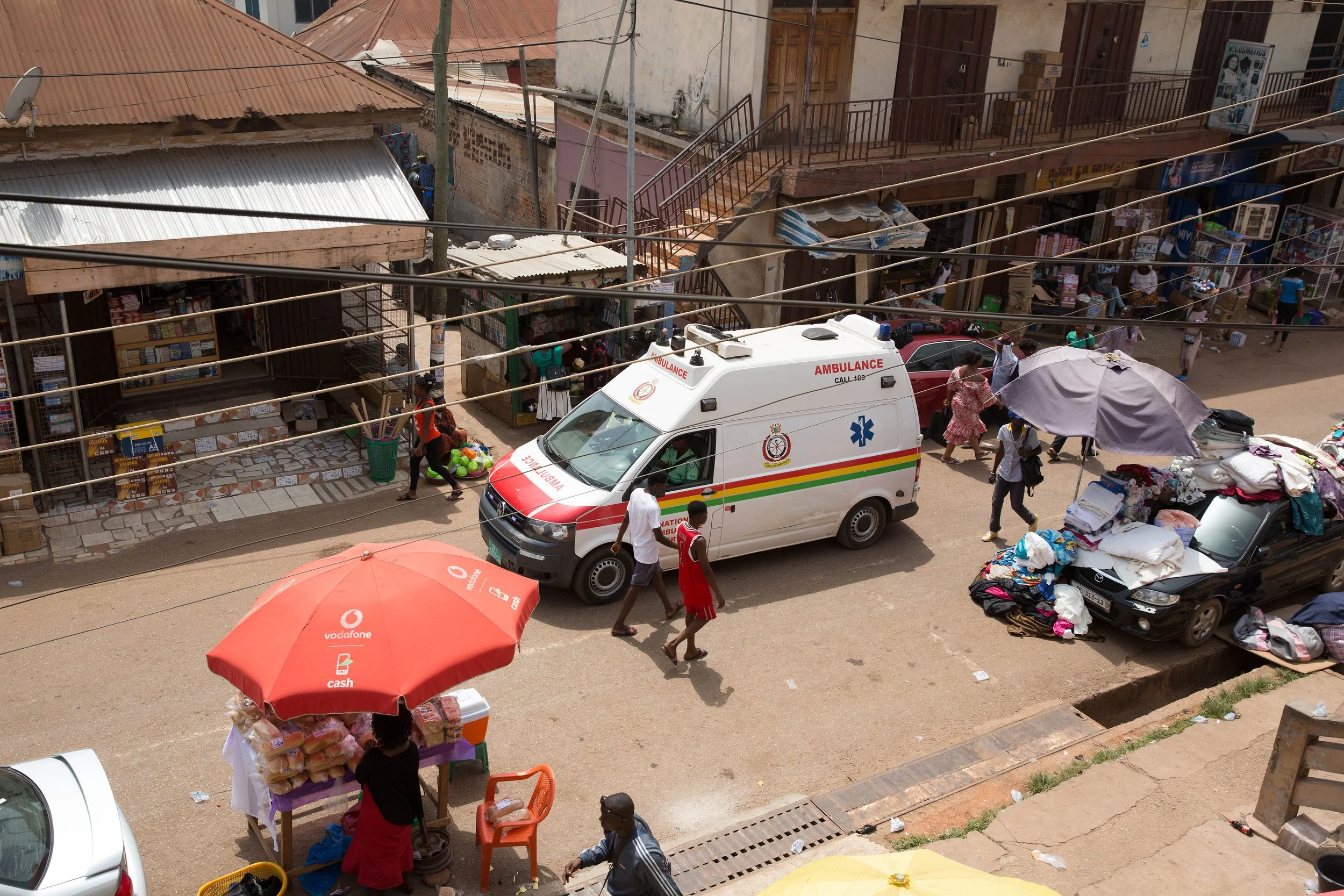Transforming Emergency Medical Response in Low-Resource Settings with AI Integration
In the realm of emergency medical response, every second counts, especially in low-resource settings where access to specialised care can be limited. Numerous patients together with the ambulance services often find themselves in a cycle of hospital hopping, desperately seeking a facility equipped to address their medical needs or that of their patients. Unfortunately, these healthcare institutions are frequently overwhelmed, operating with limited staff and resources. The grim reality of hearing "no bed available" echoes through the halls, signifying a systemic failure with fatal consequences. Compounding this issue is the disproportionate ratio of ambulances to the population, resulting in prolonged travel distances for emergency responders. Further exacerbating the situation is the inadequate addressing systems and substandard road networks which hinder ambulance access to remote areas, thereby jeopardizing timely medical interventions.
Advancements in artificial intelligence (AI) offer a glimmer of hope, especially in health care. Many AI tools have been developed to improve better health outcomes for all. Some tools provide an AI-driven symptom assessment platform for patients, offering personalized health insights and recommendations. Others specialize in AI-powered medical imaging interpretation, assisting clinicians in diagnosing conditions such as cardiac diseases and cancer. Other AI applications are useful in healthcare research, including drug discovery, and patient management optimization. AI can also be useful in the pre-hospital setting by revolutionizing how we triage patients by determining their acuity level using vital signs and symptoms and deciding what type of medical services or interventions are needed. It can be designed to direct patients to the most suitable healthcare facilities based on their acute medical needs, optimizing outcomes and saving lives.
Traditionally, after emergency responders respond to an emergency, they rely heavily on human knowledge and local knowledge to decide on which hospital to take the patient. For instance, consider a patient who has experienced a stroke and urgently requires a Computerized Topography (CT) scan of the head to ascertain the type of stroke suffered. Despite being rushed to a nearby healthcare facility, the unfortunate reality may be that the facility lacks the necessary equipment, such as a CT scan machine, to promptly diagnose and initiate appropriate treatment for the patient's condition. This results in a waste of valuable time that may reduce patient outcomes.
Instead of relying solely on the nearest hospital, AI-powered systems can quickly determine the acuity level of the patient based on vitals and symptoms, the available resources at nearby facilities, and even real-time traffic conditions to determine the most appropriate destination for the patient. This not only improves the chances of receiving timely and appropriate care but also alleviates the burden on overwhelmed healthcare facilities.
Moreover, AI can extend beyond mere triage and play a proactive role in providing first-aid guidance to paramedics and even laypersons at the scene of an emergency. By integrating AI into mobile applications or wearable devices, individuals can receive real-time recommendations on stabilising a patient's condition until professional help arrives. This could include instructions on administering CPR, controlling bleeding, or immobilizing fractures, tailored to the specific needs of the situation.
One company at the forefront of leveraging digital technology to address these challenges is SnooCODE. Through their innovative platform, SnooCODE integrates AI algorithms with geospatial data to provide accurate location-based information and route optimization for emergency responders. The SnooCODE Red app enables ambulances to accurately locate emergency scenes to reduce emergency response times to meet the international standard requirement of 8 minutes. It provides the management of ambulance services with concrete data serving as the basis for medium to long-term strategic operations planning. By combining advanced mapping technologies with AI-driven triage algorithms, SnooCODE ensures that patients are swiftly directed to the most appropriate healthcare facilities, regardless of their geographical location or the complexity of their medical condition.
Incorporating AI into emergency medical response systems is not without its challenges, including concerns about data privacy, algorithmic biases, and technological infrastructure. However, with careful planning, stakeholder engagement, and a commitment to equity and inclusivity, AI has the potential to revolutionise emergency healthcare delivery in low-resource settings. The amazing thing about the SnooCODE Red app is that it works offline in the absence of the internet thereby making it suitable for use in hard-to-reach areas with no or poor network connectivity.
Integrating AI into emergency medical response systems represents a paradigm shift in how we approach and manage emergencies, particularly in resource-constrained environments. By harnessing the power of AI for triage, facility selection, and first aid guidance, we can ensure that patients receive timely and appropriate care, ultimately saving lives and improving outcomes.
By Dr. Nana Serwaa Quao

